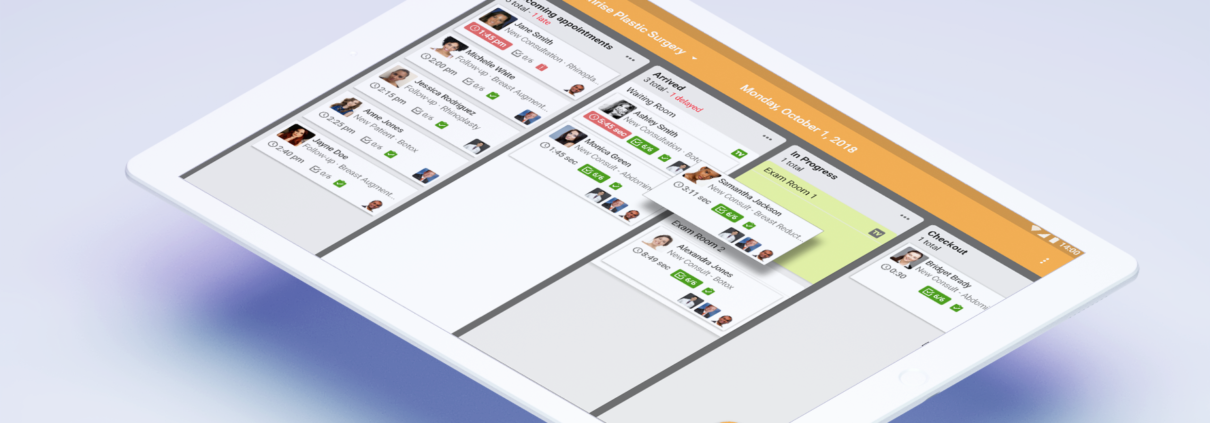HOW ‘KANBAN’ WILL ASTOUND YOU
VADIM KOYSTINEN | Symplast Lead Mobile Architect
WHAT IS ‘KANBAN’?
Kanban is Japanese for “visual signal” or “card.” In the 1940s, Toyota line-workers used a kanban (i.e., an actual card) to signal steps in their manufacturing process in order to eliminate waste. The system’s highly visual nature allowed teams to communicate more easily on what work needed to be done and when. Today, Kanban has been gaining momentum as a modern methodology for tech and non-tech companies.
HOW DOES IT APPLY TO PLASTIC SURGERY?
Our team looked at how practices currently manage a patient’s journey from check-in to check-out, and we quickly recognized the unnecessarily large amount of wasted time and resources at every stage. Our core team agreed that pioneering and introducing a kanban style of patient flow management into aesthetics was a game-changer.
WHY IS THE PREDICTIVE ANALYSIS ROOM MANAGER SO GROUNDBREAKING?
Our new Room Manager accomplishes two simultaneous objectives:
- It significantly improves the communication and efficiency of a patient’s flow, eliminating real-time ‘waste’ for both the practice and the patient.
- It captures critical data points regarding the wait times, durations, etc. to provide predictive analysis on an on-going basis to the staff.
In other words, we have designed a visual model that enables any staff or provider to easily identify blockers, bottlenecks and queues in real-time. This is an on-going evolutionary process that will continually hone and fine-tune the entire scheduling and patient flow indefinitely.
This is just one of the many examples of how our culture here at Symplast is so unique in healthcare, and aesthetics specifically. You can’t introduce A.I. Voice Assistants and Smart TV Targeted Content Generators if you are looking through the same lens as every other software vendor. Our corporate philosophy and culture will never allow us to do that. We clearly define the pain points of our users and the market, and then challenge ourselves to disrupt the ‘way it’s always been done.’

